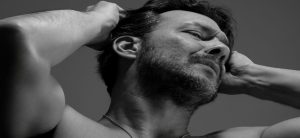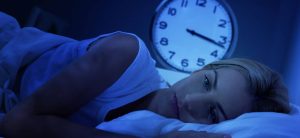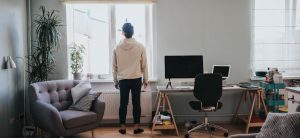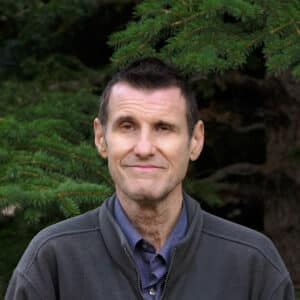Calgary Insomnia and Sleep Disorder Therapy and Counselling: Restoring Your Restful Nights
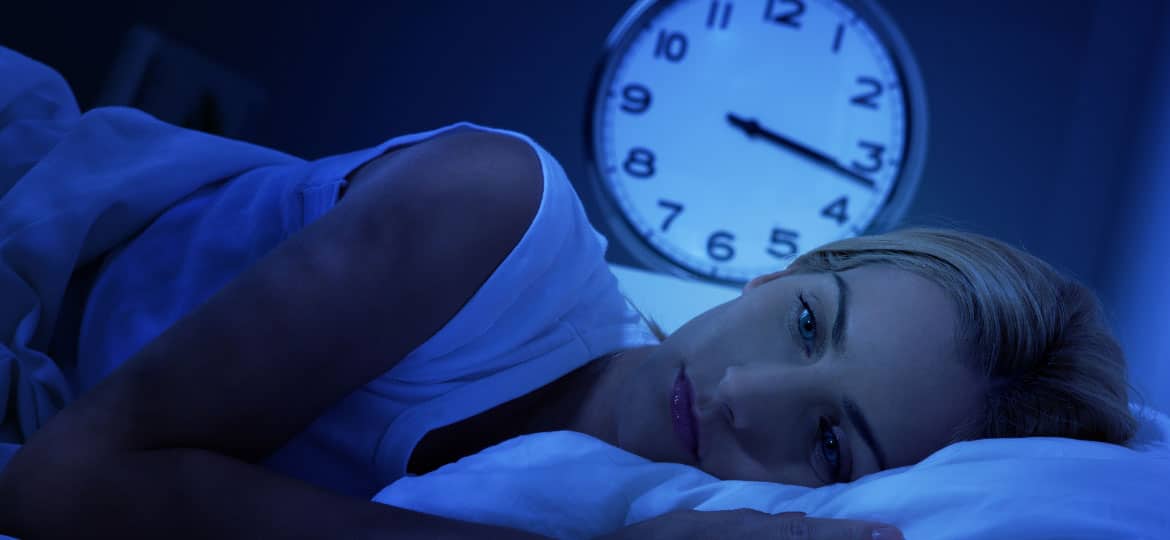
At our Calgary Psychologist Clinic, our experienced therapists specialize in helping individuals overcome insomnia and sleep disorders through compassionate and effective therapy. Sleep difficulties can significantly impact daily functioning and overall well-being, but with the guidance of a psychologist, individuals can find relief and restore restful nights.
Understanding Insomnia and Sleep Disorders
Insomnia and sleep disorders can stem from a variety of factors, including stress, anxiety, depression, trauma, and lifestyle habits. These conditions disrupt sleep patterns, leading to difficulties falling asleep, staying asleep, or achieving restorative sleep. Therapy with a psychologist addresses the underlying psychological factors contributing to sleep difficulties, paving the way for improved sleep quality.
Our Calgary Psychologists Providing Insomnia and Sleep Disorders Therapy
Andrea Krygier
Registered Psychologist
English, Spanish
Murray Molohon
Registered Psychologist
English
Jarret Verwimp
Clinical Canadian Certified Counsellor
English, French, Spanish (basic)
Dr. Raheleh Tarani
Registered Provisional Psychologist
English, Farsi, Japanese (basic), Hindi, Turkish, Punjabi, Urdu
Cognitive-Behavioral Therapy for Insomnia (CBT-I): A Proven Approach
Cognitive-behavioral therapy for insomnia (CBT-I) is a cornerstone of sleep therapy, focusing on identifying and changing negative thought patterns and behaviors that disrupt sleep. Under the guidance of a psychologist, individuals learn techniques to challenge unhelpful thoughts, manage anxiety and stress, and develop relaxation strategies. CBT-I also emphasizes sleep hygiene, promoting healthy habits conducive to restful sleep.
Exploring Underlying Factors: Addressing Emotional and Psychological Contributors
In therapy sessions, psychologists delve into underlying psychological or emotional issues that impact sleep, such as stress, anxiety, or depression. Through counseling, individuals gain insight into these factors, develop coping mechanisms, and learn stress management techniques tailored to their needs. Various therapeutic modalities, including talk therapy, mindfulness, and relaxation exercises, are utilized to address individual concerns.
Psychoeducation: Empowering Informed Decision-Making
Psychoeducation plays a crucial role in sleep therapy, providing individuals with knowledge about sleep and its impact on well-being. Psychologists offer information about sleep physiology, lifestyle choices, and common misconceptions, empowering individuals to make informed decisions and implement necessary changes to improve sleep patterns.
Creating a Supportive Environment: Compassionate Guidance and Empathy
Counseling and therapy provide a safe and non-judgmental space for individuals to express their concerns and frustrations related to sleep difficulties. Psychologists offer validation, empathy, and guidance, alleviating anxiety and stress associated with insomnia. This emotional support fosters a positive outlook on sleep issues, facilitating restful sleep and overall well-being.
Embark on Your Journey to Restful Nights
Begin your journey to restful nights and improved well-being by scheduling a free consultation with one of our compassionate therapists at our Calgary Psychologist Clinic. Through collaborative therapy, tailored techniques, and compassionate guidance, individuals can overcome insomnia and sleep disorders, reclaiming restful nights and revitalizing their lives.
Breaking the Cycle: Clinical Approaches to Insomnia Therapy
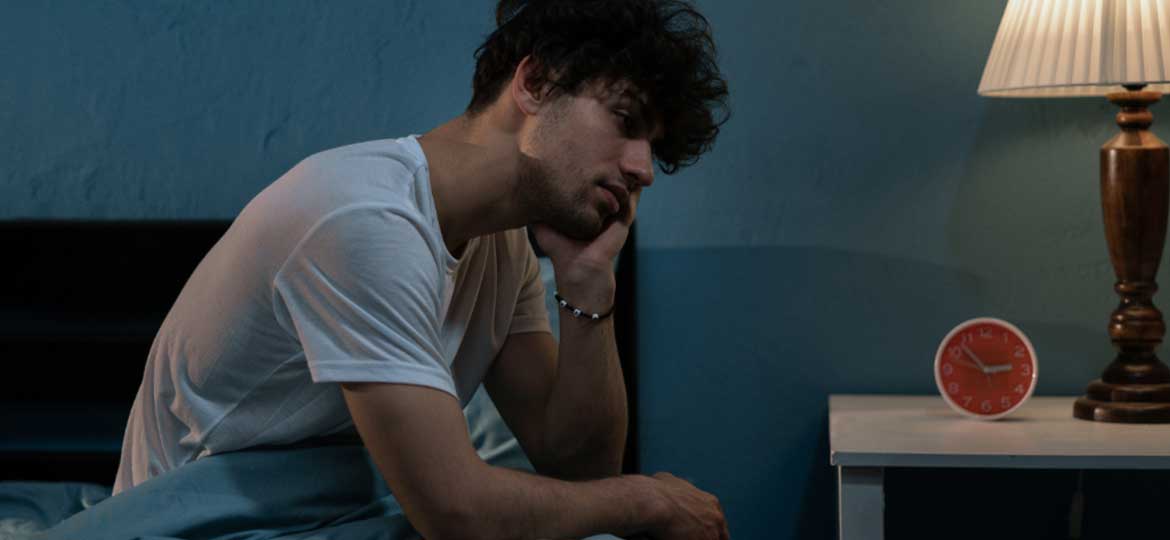
Chronic insomnia affects 5-10% of the adult population and stands as the most common sleep disorder that doctors see. The condition hits seniors especially hard, as half of them report ongoing sleep problems. Sleep therapy options keep changing, yet 30% of US adults still get less than 6 hours of sleep each night. This shows we need better treatment options now.
CBT-I has become the go-to treatment that cuts insomnia symptoms in half. This proven approach builds on more than 25 years of research and needs 6 to 8 sessions to show lasting sleep improvements. Sleep restriction therapy also plays a key role by boosting sleep efficiency. People with severe insomnia often sleep efficiently less than 50% of the time, while normal sleepers reach 85% or higher.
Understanding Clinical Insomnia
Clinical insomnia demonstrates itself through ongoing sleep problems – trouble falling asleep, staying asleep, or waking up too early [1]. Healthcare providers diagnose this condition when symptoms show up at least three times weekly for three months or longer [2].
Diagnostic Criteria and Assessment Methods
Healthcare providers use several components in their diagnostic process. They review:
Sleep diary analysis
Objective measurements through polysomnography
Self-reported sleep instruments
Assessment of daytime impairments
Clinicians might use different assessment tools. The Insomnia Severity Index (ISI) and Sleep Functional Impact Scale (SFIS) help create a full picture [3].
Impact on Physical and Mental Health
Sleep problems substantially disrupt physical and mental health. Research shows chronic insomnia raises the risk of several health conditions:
Cardiovascular disease and hypertension [4]
Type 2 diabetes and metabolic disorders [2]
Mental health issues, with 40% of chronic pain patients experiencing insomnia alongside their pain [5]
People with insomnia often report cognitive difficulties. Memory problems and poor concentration are common complaints [4].
The Vicious Cycle of Chronic Insomnia
Insomnia often creates a self-reinforcing cycle. Sleep deprivation increases anxiety about rest, which raises physiological arousal [6]. This heightened state makes quality sleep harder to achieve and creates an ongoing cycle of disrupted rest.
Research shows this cycle can be especially tough. Poor sleep creates daytime fatigue that disrupts work performance and relationships [7]. Breaking this pattern becomes crucial to make insomnia therapy work.
The Science of Sleep Disruption
Recent brain research shows that insomnia results from complex interactions in the brain’s sleep-wake control systems. Studies have found that the ventrolateral preoptic area (VLPO) works as a vital “off switch” that controls arousal. When this region is damaged, both NREM and REM sleep decrease by more than 50% [8].
Neurobiological Mechanisms
The ascending reticular activating system (ARAS) regulates sleep through two main branches. The first branch starts from cholinergic cell groups in the upper pons, while the second involves monoaminergic systems [8]. Unusual activity in these pathways can create physiological hyperarousal that shows up as higher metabolic rates and changes in heart rate variability [9].
Sleep Architecture Changes
Research on sleep patterns shows clear differences in people who have insomnia. Scientists have found more micro-arousals during sleep [10] and changes in REM sleep patterns. REM sleep instability has a direct link to problems with emotional processing and how people perceive their sleep quality [10].
Risk Factors and Triggers
These factors make people more likely to develop insomnia:
Changes that come with age – about 30% of adults have chronic insomnia [9]
Gender plays a role – women are more likely to develop insomnia than men [11]
Health conditions – around 40% of people with insomnia also have psychiatric disorders [9]
PET scans of the brain reveal that people with insomnia show higher cerebral glucose metabolism while awake and during non-REM sleep [12]. The stress response system is a vital part of this process, as shown by higher cortisol levels in people who sleep poorly [12].
Assessment and Diagnosis
A detailed assessment of insomnia needs multiple diagnostic tools and approaches. Getting a full picture helps doctors choose the right treatment strategies and understand why sleep problems happen.
Sleep Diary Analysis
Sleep diaries are the life-blood of insomnia evaluation. Research shows that patients need minimum of seven days of recording to get reliable results [13]. These diaries track vital metrics like sleep onset latency, wake time after sleep onset, and total sleep time. Studies show sleep diaries match well with polysomnography recordings (kappa = 0.87) [13].
Objective Measurements
Doctors use several objective measurement tools in their assessment:
Polysomnography (PSG) – the gold standard to evaluate insomnia [14]
Actigraphy – gives data over extended periods (3-14 days) [15]
Multiple Sleep Latency Testing (MSLT) – shows the degree of daytime sleepiness [16]
Polysomnography isn’t needed routinely. It becomes vital when doctors suspect other sleep disorders might be present [17].
Differential Diagnosis
Sleep symptoms can show up in many conditions. The main ones to look for include:
Central sleep apnea and Cheyne-Stokes breathing [18]
Sleep disruption from medications, especially with stimulants and antihypertensives [18]
Periodic limb movement disorder and restless legs syndrome [18]
Lab studies play a key role in finding the right diagnosis. These include thyroid function tests, iron studies, and drug screening when needed [16]. Research shows 30-40% of insomnia patients also have obstructive sleep apnea [19]. This makes careful evaluation necessary before starting treatment.
Behavioral Interventions
Behavioral interventions are the life-blood of effective insomnia therapy. These well-laid-out approaches modify sleep-related behaviors and thought patterns. Research shows that most patients can reduce sleep onset latency by 30-45 minutes [20].
Stimulus Control Techniques
The main goal of stimulus control therapy is to make your bed a sleep trigger rather than a place of wakefulness. Studies show this approach creates significant improvements in remission rates [20]. The basic rule is simple – leave your bed if you can’t sleep within 20 minutes and return only when sleepy [21]. Patients should use their bedroom only for sleep and intimacy to build stronger sleep-compatible associations [22].
Sleep Compression Methods
Sleep compression provides a gentler option than traditional sleep restriction. This method works particularly well for older adults or people with chronic conditions [23]. The process matches time in bed with actual sleep time to optimize sleep efficiency without dramatic changes that come with sleep restriction [24]. Research proves that sleep compression therapy creates clinically significant improvements in both responder and remission rates [20].
Relaxation Protocols
Relaxation techniques reduce physical arousal that keeps you awake. These methods trigger your body’s natural relaxation response [25]. The most effective techniques include:
Progressive muscle relaxation (PMR) – you tense and relax muscle groups systematically
Diaphragmatic breathing – you engage the large muscle at your lungs’ base
Guided imagery – you create mental images for wellbeing
Non-sleep deep rest (NSDR) – you focus your mind into a calm state
These exercises work best when combined with other sleep hygiene improvements [25]. Research shows that regular practice of these techniques, among stimulus control and sleep compression, leads to better sleep quality [20].
Cognitive Behavioral Therapy for Insomnia
CBT-I (Cognitive behavioral therapy for insomnia) is the leading non-drug treatment for chronic sleep disorders [1]. This well-laid-out approach tackles both thinking patterns and behaviors that keep sleep problems going.
Core Components of CBT-I
Three key elements make up CBT-I [1]:
Sleep restriction to set regular bed and wake times
Stimulus control that builds stronger bed-sleep connections
Cognitive therapy with mindfulness to reduce overactive thoughts
Evidence-Based Outcomes
Research shows impressive results. 70-80% of patients respond well to the treatment [3]. The benefits don’t stop there. Patients keep getting better even after treatment ends, and improvements last up to 2 years [3]. Most patients see their symptoms drop by about 50% [3].
Implementation Strategies
CBT-I usually takes 4-8 sessions that run for 30-60 minutes each [26]. Patients can get help in several ways:
One-on-one in-person sessions
Group therapy meetings
Online platforms and virtual care
Short programs (2-4 sessions)
Therapists need to look at each patient’s unique situation. Research proves that CBT-I works equally well for people of all ages and backgrounds [3]. Recent studies show that both traditional and digital methods get similar results, with digital CBT-I showing a pooled improvement rate of 0.47 [27].
Cognitive Restructuring
Cognitive restructuring plays a vital role in treating long-term sleep disorders. Studies show that people with insomnia tend to have too many negative thoughts about sleep. These thoughts create a cycle that makes sleeplessness worse [28].
Identifying Sleep-Related Thoughts
The Dysfunctional Beliefs and Attitudes Scale (DBAS) helps us spot five main areas where thinking goes wrong [29]:
Wrong ideas about insomnia’s effects
Unrealistic expectations about control
Wrong beliefs about sleep needs
Misunderstanding what causes insomnia
Wrong ideas about sleep habits
Challenging Sleep Beliefs
Research shows that negative thoughts about sleep tend to show up as automatic patterns that need careful review [30]. Patients learn to examine proof that supports or goes against their sleep-related beliefs through Socratic questioning and shared discovery. In spite of that, studies reveal that people who also have depression tend to get stuck thinking about their insomnia more often [4].
Developing Adaptive Thinking
Cognitive restructuring helps patients see their sleep experiences more realistically. They learn to replace thoughts like “I must get eight hours of sleep” with more balanced ones [31]. Research shows that fixing these thought patterns reduces worry and negative feelings that trigger stress. This ended up making sleep better [31].
The metacognitive method looks beyond just what people think. It examines how thinking works [32]. Clinical evidence suggests that this change in view helps break the cycle of harmful beliefs that keep insomnia going [23].
Environmental Optimization
Note that your physical environment plays a vital role in sleep quality. Research shows that better bedroom conditions help insomnia therapy work through multiple sensory pathways.
Bedroom Environment Design
Your bedroom setup needs to account for several elements that affect how well you sleep. People sleep better when their bedrooms are set up specifically for rest [33]. A proper arrangement and removal of electronic devices from your sleep environment reduces sleep disruption [34].
Temperature and Light Control
Research proves that the right temperature affects sleep quality by a lot. The optimal bedroom temperature for sleeping is 65 degrees Fahrenheit (18.3 degrees Celsius) [33]. To manage temperature:
Use layered bedding for adjustable comfort
Add a fan for air circulation
Monitor humidity levels for optimal comfort
Light exposure is the most powerful external factor that affects sleep [6]. Research shows that even low levels of ambient light (10 lux or higher) make you wake up more during the night [33]. Blackout curtains block external light effectively and help maintain proper circadian rhythms.
Noise Management
Research shows that low-level noise can make you shift into lighter sleep stages [33]. White noise machines mask environmental disturbances well, and studies show better sleep quality in metropolitan areas when using them [5]. Sound-blocking curtains combined with good acoustic management reduce external noise [11].
Sleep Restriction Therapy Protocols
Sleep Restriction Therapy (SRT) helps improve sleep efficiency through systematic time-in-bed management. We developed this protocol through Arthur Spielman‘s work. The protocol needs careful calculation and adjustment of sleep schedules [35].
Calculating Sleep Windows
You need to analyze sleep diary data for two weeks [36]. The sleep window calculation comes from your average total sleep time. Safety rules require a minimum of 5 hours [35]. To name just one example, someone who sleeps 6 hours but stays in bed for 9 hours would get a prescribed 6-hour window [37].
Adjusting Sleep Schedules
Sleep efficiency numbers guide these schedule changes:
Your time increases by 30 minutes when efficiency hits 90% or higher
You get 15 extra minutes with 85-89% efficiency
The schedule stays the same at 80-84% efficiency
Your time drops by 15 minutes below 80% efficiency [35]
Managing Side Effects
Patients need to know about temporary increases in daytime sleepiness when they start treatment [36]. Safety becomes crucial here. People going through SRT should not drive or operate machinery if they feel too drowsy [2]. Research shows these effects usually go away within two weeks as sleep patterns become normal [37].
The treatment works best when you stick to prescribed schedules. Weekly adjustments depend on sleep efficiency calculations [38]. This systematic approach helps combine fragmented sleep patterns into better sleep quality [7].
Modern Treatment Approaches
Technology has changed how we treat insomnia. Digital therapeutics, wearable devices, and remote delivery methods now give patients groundbreaking solutions for sleep disorders.
Digital Therapeutics
Digital Cognitive Behavioral Therapy for Insomnia (dCBT-I) makes treatment easier to access. Studies reveal that 76% of patients see clinical improvement through digital platforms [39]. These solutions bring clear benefits:
CBT-I access without needing a clinician
Individual-specific interventions that adapt through algorithms
Economical treatment options
Fewer GP visits and prescription costs
Wearable Sleep Monitoring
Modern sleep tracking devices use advanced sensors to measure sleep patterns. Research shows these devices can track:
Heart rate and heart rate variability at 98.4% accuracy [40]
Sleep stages and duration patterns
Environmental factors that affect sleep quality
Remote Therapy Delivery
Telemedicine proves to be a great way to deliver insomnia treatment. Clinical studies show that remote CBT-I works just as well as in-person therapy [41]. Research confirms both methods improve sleep outcomes equally. Patients trust their therapist’s skills and feel connected regardless of delivery method [42].
Modern approaches combine to create complete digital solutions. The National Institute for Health and Care Excellence (NICE) backs digital therapeutics as a money-saving option to treat insomnia. Evidence shows patients need less medication [43].
Integrating Light Therapy
Light therapy stands out as a valuable tool that treats sleep disorders by working with the body’s natural rhythms. Studies reveal that exposure to this therapeutic light helps reset circadian rhythm with regular use [8].
Circadian Rhythm Optimization
Light therapy targets the biological clock by delaying melatonin production and elevating mood [8]. Research shows that exposure to light that resembles sunlight helps realign circadian patterns. Morning sessions work particularly well for non-24-hour sleep-wake syndrome [10].
Light Exposure Timing
The right timing makes light therapy successful. Research shows that sessions lasting between 30-90 minutes give the best results [10]. Patients with delayed sleep phase syndrome need light exposure right after they wake up naturally [10]. Results vary based on timing:
Morning sessions: Best at the time you need to reset wake cycles
Evening sessions: Help with advanced sleep phase syndrome
Gradual exposure: Works through dawn simulation
Device Selection and Usage
The core team recommends these specifications to think about at the time of selecting a light therapy device [44]:
Intensity level of 10,000 lux
Proper UV light filtering
Placement 16-24 inches from face
Usage duration of 20-30 minutes daily
Research confirms that light boxes made specifically for sleep disorders need UV light filtering, unlike devices created for skin conditions [8]. Recent studies show that even lower intensity sources (≈180 lux) can reset the biological clock effectively [45].
Medication Management Strategies
We focused on both effectiveness and safety profiles to manage medications properly. Research shows that doctors should not rely solely on pharmacotherapy to treat insomnia, but it works well as part of a comprehensive approach with behavioral interventions [46].
Short-term vs Long-term Use
Healthcare providers group sleep medications into these categories:
FDA-approved insomnia medications
Off-label prescription medications
Over-the-counter sleep aids
Natural sleep supplements
Doctors recommend controlled-release melatonin and doxepin as first-line treatments for older adults. Z-drugs become an option only when first-line treatments don’t work effectively [47].
Tapering Protocols
Each medication type needs different tapering approaches. Doctors suggest reducing benzodiazepines and z-drugs doses by 25% every two weeks [48]. This process usually follows these steps:
A 25-30% reduction for supratherapeutic doses [48]
5-10% adjustments weekly or monthly based on how patients respond [49]
Anticonvulsants help manage high-dose withdrawal [49]
Alternative Supplements
Natural sleep aids show different levels of effectiveness. Adults can safely use melatonin supplements for short periods [50]. Valerian root has shown promising results in doses between 300-600 mg [50]. Magnesium might help you sleep better through its relaxing effects on your body and brain [50].
Healthcare experts stress the need to think about natural supplements carefully, despite their easy availability. Studies reveal that many supplements’ active ingredients don’t match what their labels claim [51]. Doctors advise against these supplements for pregnant women, nursing mothers, and people with specific medical conditions [51].
Environmental Optimization
Note that your physical environment plays a vital role in sleep quality. Research shows that better bedroom conditions help insomnia therapy work through multiple sensory pathways.
Bedroom Environment Design
Your bedroom setup needs to account for several elements that affect how well you sleep. People sleep better when their bedrooms are set up specifically for rest [33]. A proper arrangement and removal of electronic devices from your sleep environment reduces sleep disruption [34].
Temperature and Light Control
Research proves that the right temperature affects sleep quality by a lot. The optimal bedroom temperature for sleeping is 65 degrees Fahrenheit (18.3 degrees Celsius) [33]. To manage temperature:
Use layered bedding for adjustable comfort
Add a fan for air circulation
Monitor humidity levels for optimal comfort
Light exposure is the most powerful external factor that affects sleep [6]. Research shows that even low levels of ambient light (10 lux or higher) make you wake up more during the night [33]. Blackout curtains block external light effectively and help maintain proper circadian rhythms.
Noise Management
Research shows that low-level noise can make you shift into lighter sleep stages [33]. White noise machines mask environmental disturbances well, and studies show better sleep quality in metropolitan areas when using them [5]. Sound-blocking curtains combined with good acoustic management reduce external noise [11].
Lifestyle Modifications
Lifestyle changes are the foundations of a complete insomnia therapy program. Studies show that good habits can help you fall asleep 30-45 minutes faster [52].
Sleep Hygiene Optimization
Good sleep hygiene includes both behavior patterns and environmental conditions. Research shows that waking up at the same time every day is a vital part of sleep regulation [9]. Sleep experts recommend a well-laid-out bedtime routine. You should avoid electronic devices before bed since blue light can disrupt your natural sleep cycles [52].
Exercise and Activity Planning
Physical activity impacts your sleep quality in many ways. Research confirms that moderate exercise can boost sleep quality if you have generalized anxiety disorders [52]. Here’s the best exercise schedule:
Morning workouts to help line up your body clock
30 minutes of moderate aerobic activities daily
Light evening stretching or yoga to relax
Stress Management Techniques
Good stress management helps improve sleep significantly. Research shows that mindfulness meditation can reduce sleep problems in adults [52]. Progressive muscle relaxation for 20-25 minutes daily helps reduce physical tension that keeps you awake [12].
Biofeedback devices help patients identify and control body functions that affect sleep [52]. Studies show that regular relaxation techniques combined with good sleep habits create major improvements in sleep quality [9]. These lifestyle changes work together with other treatments to boost overall sleep results.
Treatment Resistance
Resistance to treatment in insomnia therapy creates unique challenges for clinicians and their patients. Studies show that 40-50% of patients who receive insomnia treatment don’t achieve remission [53].
Identifying Barriers
The biggest obstacles to treatment that works cover several levels:
60% of practitioners don’t know enough about CBT-I [54]
Healthcare systems limit access to specialized care
Patients face cost barriers from $200 to $2500 for complete treatment [54]
Healthcare delivery lacks cultural competency
Alternative Approaches
Healthcare providers now look at different options for cases that resist treatment. Research shows digital therapeutics have potential, and single-session interventions work well for acute insomnia [54]. Brief behavioral treatments provide simple but effective solutions for chronic cases [54].
Combination Therapies
Research proves that integrated treatment approaches work better. Combining CBT-I with medication leads to higher remission rates (56%) compared to using just one treatment (43%) during extended therapy phases [55]. Patients who started with combined therapy and then maintained CBT-I ended up with 68% remission rates. This worked much better than continuous medication use, which only achieved 42% [55].
Adding nurse practitioners to primary care settings has shown great results. Patients experience lasting improvements in their sleep quality [54]. Clinicians can tackle treatment resistance better by implementing these approaches systematically and looking at each patient’s unique factors and patterns of related conditions.
Treatment Customization
The success of insomnia therapy depends on how well treatments match each patient’s needs. Research shows that tailored sleep medicine takes into account many factors, from genetic makeup to daily habits [13].
Patient-Specific Factors
A complete evaluation creates the foundation for tailored treatment that covers:
Physical examinations and imaging studies
Genetic testing considerations
Molecular profiling for treatment response
Individual sleep patterns and chronotype assessment
Comorbidity Considerations
CBT-I delivers impressive results for patients with other health conditions. The outcomes match or this is a big deal as it means that the results seen in straightforward insomnia cases [56]. Research proves that treating insomnia alongside psychiatric conditions works better, since about 50% of insomnia cases happen together with psychiatric diagnoses [57].
Adherence Enhancement
Patient adherence plays a crucial role in treatment success. Research shows that higher treatment acceptability scores in the first session predict better attendance and outcomes [58]. Healthcare providers use several strategies to maximize adherence.
They start with detailed patient education. Regular monitoring and feedback systems come next. Treatment plans change based on how patients respond and their priorities [13].
Nurse coaching paired with digital CBT-I can help patients stick to their sleep restriction protocols [59]. Research also reveals that treatment acceptability early in therapy offers a way to improve overall compliance [58].
Healthcare providers can meet each patient’s unique needs through these tailored approaches. Current evidence confirms that focusing on patient-specific factors, handling multiple conditions, and boosting adherence creates better treatment outcomes [56].
Maintaining Treatment Gains
Keeping the benefits of insomnia treatment is a vital stage in recovery. Studies show that 64% of patients maintain their improvement one year after cognitive behavioral therapy for insomnia. Even better, 66% stay symptom-free after ten years [60].
Relapse Prevention
We focused on using specific approaches before completing treatment. Regular food intake and consistent exercise habits play a significant role to maintain sleep improvements [19]. A complete prevention plan has:
Sleep schedule consistency
Regular physical activity
Controlled internet usage
Structured meal timing
Early recognition of warning signs
Long-term Monitoring
Success over time needs systematic follow-up care. Research confirms that multicomponent lifestyle medicine interventions show moderate to large effects (d = 0.50–0.56) to maintain sleep quality [61]. These lifestyle-based interventions work best especially when you have regular monitoring protocols [61].
Lifestyle Integration
Sustained improvement depends on making healthy sleep practices part of daily routines. Regular food intake patterns create a simple framework to regulate sleep [19]. Daily exercise supports continued sleep quality improvements [19]. Limiting internet use to less than 5 hours daily reduces chronic insomnia risk by a lot [19].
Lifestyle modifications deliver substantial benefits. Meta-analyzes show moderate effect sizes (g = 0.51) for sleep hygiene education [61]. Studies highlight that successful maintenance needs ongoing adherence to established sleep patterns and lifestyle changes [61].
Conclusion
Treating chronic insomnia needs several different therapeutic methods working together. Research shows that cognitive behavioral therapy works best when combined with better sleep environments and lifestyle changes. The results speak for themselves – about 70-80% of patients see their symptoms improve substantially through structured treatment programs.
Healthcare providers now have more ways to help patients thanks to digital therapeutics and remote treatment options. These new tools work among other proven behavioral treatments and give doctors complete solutions to help all kinds of patients. Patient outcomes improve when treatment plans are tailored to each person’s specific situation and other health conditions.
Patients who stick to regular sleep schedules and healthy habits after finishing therapy see the best results. The numbers tell an encouraging story – 64% of patients keep their sleep improvements after one year, and 66% stay symptom-free even after ten years. Healthcare providers help patients sleep better and improve their health and daily life by using proven strategies and checking progress regularly.
FAQs
Q1. What is considered the most effective non-pharmacological treatment for insomnia? Cognitive Behavioral Therapy for Insomnia (CBT-I) is widely regarded as the most effective non-pharmacological treatment for insomnia. It addresses both cognitive and behavioral aspects that perpetuate sleep difficulties, with 70-80% of patients achieving significant improvement during acute treatment.
Q2. How long does it typically take to see improvements with insomnia therapy? The duration varies, but most patients start seeing improvements within 4-8 weeks of consistent therapy. CBT-I, for instance, is usually delivered over 4-8 sessions, each lasting 30-60 minutes. However, some patients may experience benefits sooner, especially with intensive interventions.
Q3. Can lifestyle changes alone improve insomnia symptoms? Yes, lifestyle modifications can significantly improve insomnia symptoms for many people. Consistent sleep schedules, regular exercise, stress management techniques, and optimizing the sleep environment can reduce sleep onset latency by 30-45 minutes. However, severe or chronic cases may require additional interventions.
Q4. Are there any effective alternatives to medication for treating insomnia? Yes, several non-pharmacological approaches have shown effectiveness. These include CBT-I, sleep restriction therapy, stimulus control techniques, relaxation protocols, and light therapy. Digital therapeutics and wearable sleep monitoring devices are also emerging as promising alternatives to traditional medication-based treatments.
Q5. How can one maintain improvements after completing insomnia therapy? Maintaining improvements involves several strategies: adhering to consistent sleep schedules, regular physical activity, controlled internet usage, and structured meal timing. Long-term monitoring and follow-up care are crucial. Studies show that 64% of patients maintain improvement one year after CBT-I, with 66% remaining symptom-free even after ten years when these strategies are consistently applied.
References
[1] – https://implementationsciencecomms.biomedcentral.com/articles/10.1186/s43058-020-00096-4
[2] – https://www.healthline.com/health/healthy-sleep/sleep-restriction-therapy
[3] – https://pmc.ncbi.nlm.nih.gov/articles/PMC8808745/
[4] – https://pmc.ncbi.nlm.nih.gov/articles/PMC4513261/
[5] – https://www.sciencedirect.com/science/article/abs/pii/S1389945721002021
[6] – https://www.sleepfoundation.org/bedroom-environment/light-and-sleep
[7] – https://stanfordhealthcare.org/medical-treatments/c/cognitive-behavioral-therapy-insomnia/procedures/sleep-restriction.html
[8] – https://www.sleepfoundation.org/light-therapy
[9] – https://www.sleepfoundation.org/insomnia/stress-and-insomnia
[10] – https://stanfordhealthcare.org/medical-conditions/sleep/advanced-sleep-phase-syndrome/treatments/bright-light-therapy.html
[11] – https://www.sleepfoundation.org/noise-and-sleep
[12] – https://www.hopkinsmedicine.org/health/wellness-and-prevention/sleepless-nights-try-stress-relief-techniques
[13] – https://pmc.ncbi.nlm.nih.gov/articles/PMC11204813/
[14] – https://www.dovepress.com/a-systematic-review-of-instruments-for-the-assessment-of-insomnia-in-a-peer-reviewed-fulltext-article-NSS
[15] – https://www.sleepfoundation.org/insomnia/diagnosis
[16] – https://www.ncbi.nlm.nih.gov/books/NBK560720/
[17] – https://pmc.ncbi.nlm.nih.gov/articles/PMC2504337/
[18] – https://emedicine.medscape.com/article/1187829-differential
[19] – https://pmc.ncbi.nlm.nih.gov/articles/PMC8924361/
[20] – https://jcsm.aasm.org/doi/10.5664/jcsm.8986
[21] – https://www.sleephealthsolutionsohio.com/blog/stimulus-control-therapy-insomnia/
[22] – https://sleepopolis.com/education/stimulus-control-therapy/
[23] – https://www.sleepfoundation.org/insomnia/treatment/cognitive-behavioral-therapy-insomnia
[24] – https://www.thesleepreset.com/blog/sleep-compression-techniques-for-better-sleep
[25] – https://www.sleepfoundation.org/sleep-hygiene/relaxation-exercises-to-help-fall-asleep
[26] – https://bmcprimcare.biomedcentral.com/articles/10.1186/1471-2296-13-40
[27] – https://www.sciencedirect.com/science/article/pii/S1087079222000594
[28] – https://goodhealthpsych.com/blog/how-cognitive-behavioral-therapy-for-insomnia-works/
[29] – https://pmc.ncbi.nlm.nih.gov/articles/PMC7012685/
[30] – https://www.med.upenn.edu/cbti/assets/user-content/documents/Morin_CognitiveTherapyforDysfunctionalBeliefsaboutSleepandInsomnia_BTSD.pdf
[31] – https://www.umassmed.edu/globalassets/psychiatry/cbti/overcoming_insomnia_session_3.pdf
[32] – https://www.frontiersin.org/articles/10.3389/fpsyg.2021.705112/full
[33] – https://www.sleepfoundation.org/bedroom-environment
[34] – https://www.sleepfoundation.org/bedroom-environment/how-to-design-the-ideal-bedroom-for-sleep
[35] – https://pmc.ncbi.nlm.nih.gov/articles/PMC7053018/
[36] – https://www.medicalnewstoday.com/articles/sleep-restriction-therapy
[37] – https://sleepopolis.com/education/sleep-restriction-therapy/
[38] – https://www.sleepfoundation.org/insomnia/treatment/sleep-restriction-therapy
[39] – https://pmc.ncbi.nlm.nih.gov/articles/PMC9491430/
[40] – https://www.nytimes.com/wirecutter/reviews/best-sleep-trackers/
[41] – https://www.health.harvard.edu/blog/cognitive-behavioral-therapy-for-insomnia-by-telemedicine-is-it-as-good-as-in-person-treatment-202106152488
[42] – https://aasm.org/cbti-telemedicine-insomnia/
[43] – https://www.bighealth.com/news/sleepio-is-the-first-ever-digital-therapeutic-to-receive-nice-guidance-confirming-clinical-and-cost-effectiveness
[44] – https://www.mayoclinic.org/diseases-conditions/seasonal-affective-disorder/in-depth/seasonal-affective-disorder-treatment/art-20048298
[45] – https://jcsm.aasm.org/doi/10.5664/jcsm.27445
[46] – https://www.uptodate.com/contents/pharmacotherapy-for-insomnia-in-adults
[47] – https://www.aafp.org/pubs/afp/issues/2017/0701/p29.html
[48] – https://pmc.ncbi.nlm.nih.gov/articles/PMC10095217/
[49] – https://www.aafp.org/pubs/afp/issues/2017/1101/p606.html
[50] – https://www.healthline.com/nutrition/sleep-aids
[51] – https://www.sleepfoundation.org/sleep-aids/natural-sleep-aids
[52] – https://www.sleepfoundation.org/sleep-hygiene/how-to-relieve-stress-for-bedtime
[53] – https://aasm.org/undiagnosed-and-untreated-sleep-disorders-barriers-to-care/
[54] – https://pmc.ncbi.nlm.nih.gov/articles/PMC11361330/
[55] – https://pubmed.ncbi.nlm.nih.gov/19454639/
[56] – https://pmc.ncbi.nlm.nih.gov/articles/PMC4703103/
[57] – https://pmc.ncbi.nlm.nih.gov/articles/PMC10004168/
[58] – https://pmc.ncbi.nlm.nih.gov/articles/PMC5837899/
[59] – https://academic.oup.com/sleep/article/47/Supplement_1/A191/7654610
[60] – https://pubmed.ncbi.nlm.nih.gov/35099359/
[61] – https://www.sciencedirect.com/science/article/abs/pii/S0165032723002793
Calgary Counselling And Psychologist Services
Our Calgary Psychologists and therapists offer counselling and formal psychological assessment services for individuals, couples, and families. We tailor these services to meet the unique needs of each client. Our goal is to support our clients in achieving their personal and relational goals.
We help families improve communication and solve problems. We also offer assessments for learning disabilities and ADHD. Our support extends to various mental health issues. Our support covers many mental health issues.
Our therapists dedicate themselves to providing a safe and supportive environment for clients of all ages and backgrounds. They help clients explore their thoughts, feelings, and experiences. The team is committed to creating a space where clients can feel comfortable and understood. They strive to help clients on their journey towards healing and growth.
We are here to help with individual therapy, couples counseling, or support for your child, teen or family. We offer counseling services in person and virtually. This makes it convenient and flexible for our clients to access our services. Whatever challenges you may be facing, we are committed to guiding you towards healing, growth, and greater well-being.














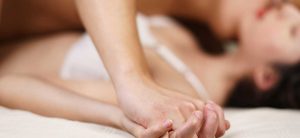










Finding a Psychologist or Counsellor that can help you clear your mind and find more inner peace doesn't have to be difficult. Because the therapeutic relationship is so important, we offer a Free Consult. Text or Call Today and get yours!
Find Peace of Mind with a Calgary Psychologist or Counsellor That Understands Your Needs
Contact UsCalgary Therapy Mental Health Issues
In our Calgary counselling clinic, we help with many mental health problems. Our therapists can assist with a range of issues. These include grief, trauma, anxiety, depression, parenting challenges, PTSD, eating disorders, postpartum depression, fears and phobias, ADHD, self-esteem issues, relationship difficulties, OCD and many more.
No matter what you’re dealing with, our therapists are here to provide evidence-based therapy that fits your needs. We want to help you overcome challenges, build resilience, and find more happiness and fulfillment in your life.

